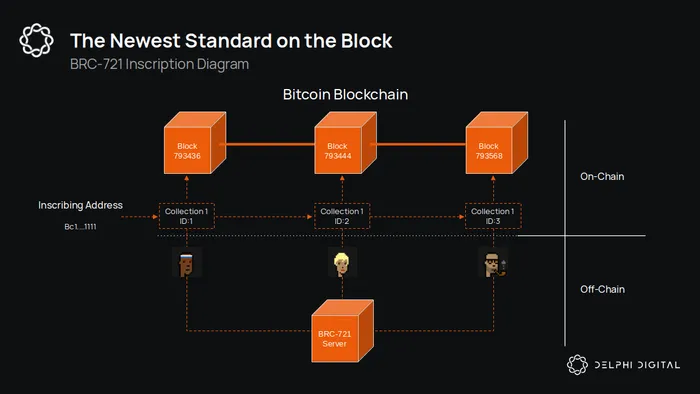I have been saying for a while now that it has been challenging to keep up with the pace of innovation on Bitcoin – and last month was no different. The first few months of 2023 have given us Ordinals, Ordinal marketplaces, BRC-20s, Stamps, ORC-20, and now BRC-721s. Many seem to be ignoring Bitcoin in favor of a certain coin that has shifted to PoS – and they may miss out on some exciting developments.
If you have minted NFTs on Ethereum and other chains, you know they often come as part of a collection. Users mint NFTs from a collection’s contract, and verifying their inclusion in a collection is reasonably straightforward. Not so with Ordinals. Creators inscribe Ordinal collections one by one on chain, and verifying that the inscription you purchased was part of a collection is quite challenging. Marketplaces and Ordinal sites have different methods for ascertaining the authenticity of inscriptions, but copies and scams are rampant. The scams abound because someone can easily inscribe the same data on BTC and list the fraudulent inscription on the market. Users would have to go through many extra steps to verify the inscription – which few do.

BRC-721 is a new token standard that can solve the shortcomings of Ordinal collections while adding some additional utility. The BRC-721 standard uses manifests to assign extra data to inscriptions allowing creators to group them in an easily verifiable manner. Manifests are just standardized JSON forms where users store collection data. Creators then store the data in off-chain servers and sign it with their private key to signal its authenticity. The servers then serve the data through an API – allowing services like wallets and dex’s to access the manifests and verify the collection.
There are three different types of manifests:
- Collection: Specifies the parameters of a collection, including the number of inscriptions in the collection and payment addresses.
- Inscription: Specifies details about the Ordinal.
- Reveal: Contains a metadata URL. Unlike Ordinals, the actual data for the inscription will be stored off-chain – the metadata URL points to it.
BRC-721s are still extremely new, and only one wallet currently supports them. They also require another layer of off-chain computation for Ordinals which adds more centralization risk. Ordinals already require Indexers, and BRC-721s would need Indexers and BRC-721 servers to host metadata. Of course, there are benefits. The biggest benefit is that because only the metadata is stored on chain inscriptions should be much cheaper.
There has also been little in the way of BRC-721 adoption yet, with only around 700 inscribed collections. But, the technology is still in beta, and readers should consider this a testnet deployment.
By the start of 2023, I was almost ready to write Bitcoin off. The rest of the crypto market was much more intersting – NFTs, DeFi, P2E, smart contracts, etc. Bitcoin seemed stuck in an endless loop of conferences, podcasts, micro-payments, and new hardware wallets. The rest of the crypto market had left it behind. But, Ordinals have reinvigorated Bitcoin – new projects, use cases, and standards have brought excitement to the orange coin, and I couldn’t be happier about it. BRC-721 is another step in the right direction for Bitcoin: experimentation. I have no idea if users will adopt this standard, but Bitcoin innovation seems to be the place to be right now.